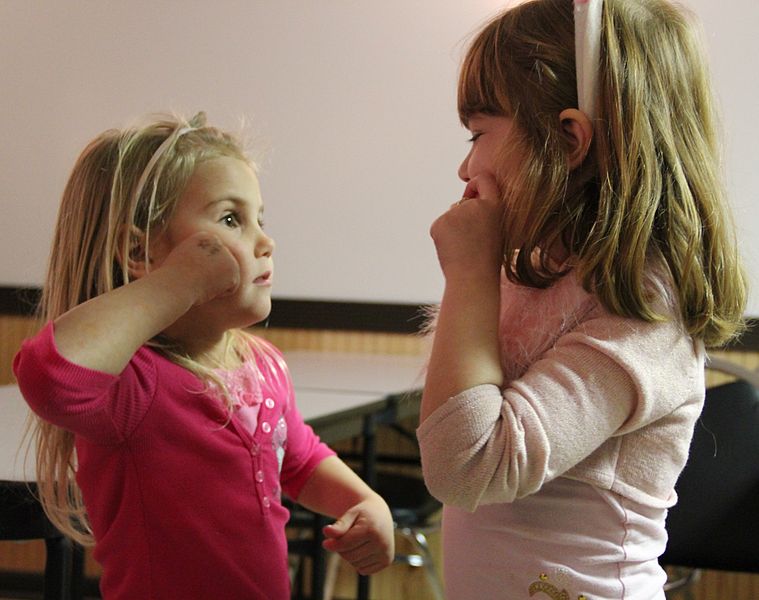Sign language is a valuable tool for babies to communicate. Babies can understand far more words than they can say, and a hand sign is easier for a baby to copy than a complex mix of sounds. More and more parents and teachers are using sign language to communicate with little ones, in addition to vocal language.
In addition to clearer communication, sign language helps babies to develop autonomy as they can ask for what they need. Signs like “milk,” “more,” “diaper,” and “all done” serve as great aids to communication, giving babies the tools to not only express their needs but better understand and regulate them. Here are a few examples of how sign language is put to use communicating with little ones every day:

-Baby signs “more” at the table when they are still hungry.
-Parent signs “hot” to ask if Baby is too warm.
-Baby signs “diaper” to request a diaper change.
-Parent signs “help” to ask if Baby wants help putting on their socks.
-Baby signs “rabbit” to request a favorite toy.
-Parent signs “please” and “thank you” to model polite conversation.
The best way to teach your baby sign language is to use it in day-to-day interactions. This means learning signs on your own, then using them regularly in combination with spoken words. To get started learning, pick up a sign language teaching guide or set of sign language flash cards to study on your own. If you have older children, you may enjoy learning sign language together with an ASL learning kit. You can also find many wonderful baby sign language tutorials online. Find exactly what you’re looking for with a visit to our Bellingham, Washington learning store
You don't need to worry about learning every sign, sentence structure, or even the ASL alphabet, just the words that will come in handy when communicating with your little one. Start small with just one word, and let the rest of your vocabulary fill little by little.
The Teaching Process
Now that you have one or more signs memorized, start incorporating it into day-to-day conversation. When asking if your baby wants more food, tap your fingers together to demonstrate the sign. Do this each time you offer more food, and your baby will develop an understanding of the sign language word in the same way they learn vocal language. If you catch your baby making a sign, repeat it back to them in a sentence.
Example:
A baby is eating their oatmeal very quickly then starts playing with the bowl.
The parent asks, “Do you want more?” while drawing their fingers together.
Baby repeats the sign.
The parent says, “Okay, I’ll make more oatmeal.”
When the oatmeal is done, the baby is moving around restlessly.
The parent says, “Uh oh, it’s too hot,” signing as if they are taking hot food out of their mouth and cringing.
The baby then starts to understand that the oatmeal is too hot to eat. The baby signs “more” again.
The parent says, “we just need a little more time,” tapping their wrist.
It's never too early to start teaching your baby sign language. Even before babies develop the motor control needed to repeat signs, they are observing their world and absorbing knowledge. Adding sign language into your daily routine provides a new avenue for understanding.

